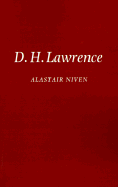Summary
D. H. Lawrence was one of the most versatile of all English writers, using almost every literary form in which the English language can express itself. Individual studies of his novels, his stories, his poems, his plays, his travel writings, his criticism, his essays, his translations or his correspondence could occupy a book as long as this one. I have chosen to concentrate upon his ten main novels because, like most readers and critics, I believe these to be the creative core of his achievement. Even so, I leave out any detailed consideration of the two early drafts of Lady Chatterley's Lover, now published as novels in their own right, and of The Boy in the Bush, a tale of the Australian outback which he wrote in collaboration with M. L. Skinner.
A note of apology for being necessarily selective creeps into almost all books about D. H. Lawrence (some of which I have listed at the end as being especially useful). This is inevitable when his range is so wide and so compelling. The first task of the critic is to sift the most important work from the rest; but even the minor writings of Lawrence point to the volatile energy of his mind and the persistent attempt to stretch his art to its limits. I have concentrated on ten novels, but I have regarded the letters as an essential companion to them, for Lawrence often sums up in a passing remark the mood in which he was writing or the intention he sought to achieve in his fiction. Where it seems to amplify our understanding of a novel I have referred to an appropriate essay or short story.
- Type
- Chapter
- Information
- D. H. LawrenceThe Novels, pp. 1 - 9Publisher: Cambridge University PressPrint publication year: 1978

